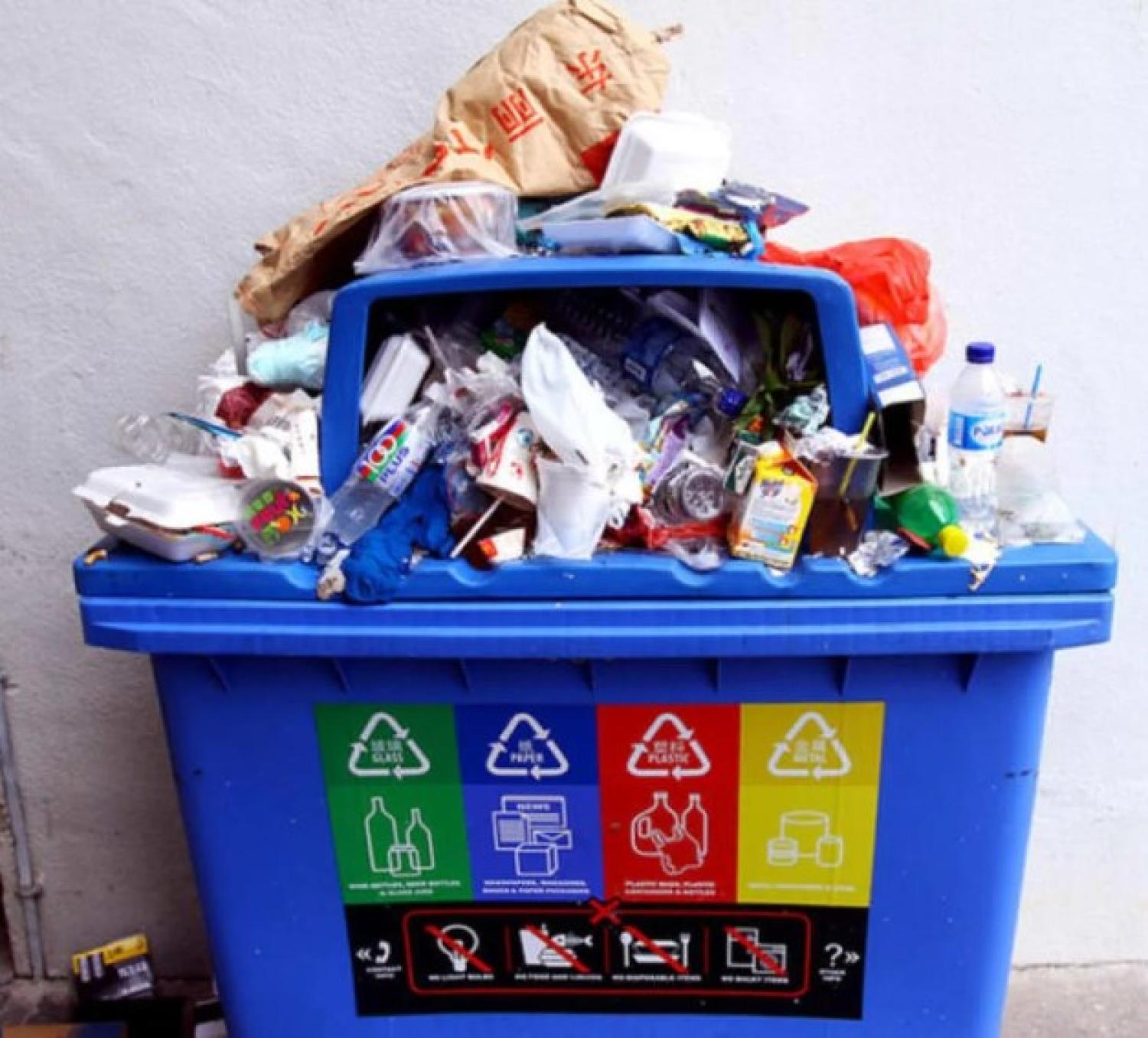Recycling contamination

Recycling is a tricky process that takes practice and vigilance since guidelines are often changing. According to EcoCycle, Boulder’s recycling company, there are some items that regularly contaminate their recycling machines. On campus, the Grounds and Recycling Operations Center (GROC) sorts through recycling to process them and ensure their longest and best use. Here are some common contaminants and why these items need to stay out of our recycling bins.
Plastic bags
Recycling facilities cannot handle plastic bags because they jam the processing equipment and can cause the entire recycling facility to shut down. Some recycling facilities have scheduled time daily to clear out plastic bags from the machinery since this contaminant is so common and damaging.
What you can do with plastic bags:
- Reuse them.
- Recycle them at CHaRM in Boulder.
- Drop them off at participating grocery stores that accept used bags.
- Throw them into the landfill. Although these bags will sit in this landfill for years, it is a better option than clogging recycling equipment.
- The best option is to avoid plastic bags altogether. Plus, Colorado state law mandates that stores charge customers for plastic bags.
Shredded paper
This type of paper is too small to sort, and the pieces fall between the cracks of sorting machines, stick to the belts and make a mess on the floor. Follow these guidelines for disposing of shredded paper on campus.
Scrap metal
Pieces of scrap metal of any size can cause significant damage to recycling equipment. Similar to plastic bags, you can take pieces of scrap metal to CHaRM in Boulder.
Hazardous waste
You can take paint, automotive fluids, car batteries and pesticides to the Boulder County Household Hazardous Waste Facility. Hazardous waste includes anything that can poison, corrode, explode or burst into flame when mishandled. Do not dispose of hazardous waste in the trash, down the drain or onto the ground since these disposal methods could lead to health and environmental problems.
Did you know vapes and other nicotine products are also considered hazardous waste? Stop by drop boxes on campus at the University Memorial Center on the first floor across from Starbucks or at the West Boulder Recycling Center on 63rd Street to properly dispose of vapes and other nicotine products.
Non-recyclable plastics
Determining which plastics to recycle can be tricky. Plastic lids, chip bags, Styrofoam and other plastics not listed in EcoCycle’s recycling guidelines are not recyclable in your curbside bin or on campus because facilities aren’t able to implement systems to recycle them. These types of products must go to landfills, which means you can throw them away.
Flattened containers
Single-stream equipment separates “flats” (like paper) from “round” objects (like containers). With flattened containers, the equipment may mistakenly send them to the wrong side of the facility and contaminate the process. You can help recycling facilities’ sorting process by avoiding flattening materials like cans, plastics and other non-paper or non-cardboard goods.
Caps and lids
Previously, recycling facilities could not recycle lids and caps. Updated guidelines now allow for plastic cap recycling. Here are some things to know if you want to recycle caps and lids.
For plastic bottles or jars, follow these guidelines:
- Empty all liquids and rinse the containers.
- Screw the cap back on and put it all in the bin.
- Large yogurt lids can go in the bin with their container or by themselves.
- Loose plastic lids should be put in the trash.
For glass bottles or jars, follow these guidelines:
- Empty all liquids and rinse the containers.
- Remove all metal and plastic lids from glass bottles and jars before recycling.
- Put metal lids into bin by themselves.
- Loose plastic lids should be put in the trash.
Liquids
When recycling bottles and jars, empty and rinse all containers before throwing them in the recycling bin. Removing the liquid helps recycling facilities work more efficiently since they don’t have to stop and clean up sticky, smelly messes.
Frozen food boxes
Frozen food boxes are made from paper that uses plastic resin to protect the food from freezer burn. Recycling facilities cannot separate this plastic from the paper before it enters the pulping process. If you have these types of boxes, opt to throw them in the trash instead of the recycling bin.
Wrappers and packets
Wrappers are made of a mix of materials, including cellophane, plastics and aluminum. Therefore, recycling facilities cannot effectively recycle these items. However, some companies use candy and chip wrappers to create new products such as bags and home decor.
Ceramics, Pyrex and mirrors
Most waste facilities cannot melt ceramics, Pyrex or mirrors. You should throw broken plates, other broken ceramics, Pyrex and mirrors in the trash since they can contaminate the glass stream in recycling facilities. If your ceramic dishes, Pyrex and mirrors are reusable, donate them to a local charity or donation center.
Compost
Items that you can compost cannot be recycled. Keep compostable items out of recycling bins, including compostable cutlery, cups, etc. CU Boulder Facilities Management and Dining Services composts food scraps and yard waste. People living in Boulder can also compost food scraps and yard waste in curbside bins. However, due to changes in composting guidelines, items like paper and compostable plastics are not accepted in Boulder.
Learn more about recycling contamination


